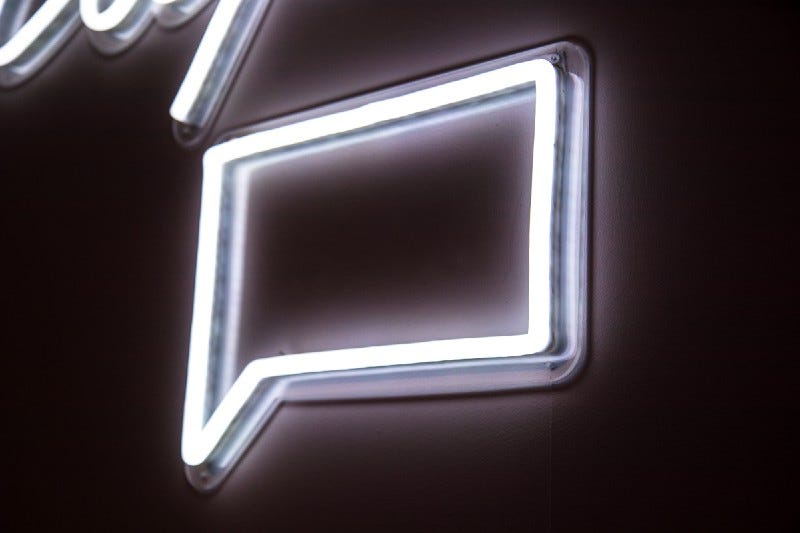Real-life Dialogue is Back and Forth

One of my favorite writing students writes chapters that I love to read. They pull me along as her characters chat. All the characters sound so authoritative, so sure of themselves, so together. I feel I am in capable hands and I can sit back, relax, and enjoy the read.
And yet.
Sometimes, the characters speak in speeches. Their dialogue is a full paragraph long. Which is lovely to read. However.
In real life, people don’t talk in speeches. They talk back and forth.
We humans interrupt each other. Make hmmmm noises. Agree or disagree. Chime in with our brilliant ideas. Stand up and pace the room. Take a drink of coffee. Light a cigarette. Okay, ditch the lighting of a cigarette. That doesn’t happen much anymore. It used to be such a handy device!
My point is that the writer should strive to make their dialogue sound natural, and natural speech comes out in a back and forth manner. It’s okay to throw in the occasional speech, but just don’t make a habit of it.
Writers, If Your Reader is Confused, She Will Quit Reading
You need to create clarity on the pagemedium.com
Learn to Write Natural Dialogue
Listen
The best tip for learning to write natural-sounding dialogue is to learn to listen. We are a culture of non-listeners. Half the time, we’re thinking about what we’re going to say in response. The other half the time, we’re scrolling through our phones.
Put the Phone Down
Put the damn phone down and listen. Quit being so concerned with what brilliance you are going to impart and listen. Take yourself out on a date to a coffee shop or bar and listen. Internalize the rhythms of speech that you hear. Write down snippets in your journal.
Read Your Dialogue Out Loud
Reading out loud makes an enormous difference — this is true for all your work, but especially dialogue. You’ll hear where it sounds clunky or stilted, or where it goes on too long.
Read Dialogue Heavy Books
Reading everything you can get your hands on is the best way to improve your writing, and if you can find a writer who uses a lot of dialogue, inhale her works. One author I’ve recently discovered who uses a ton of dialogue in her work is Taylor Jenkins Reid. Try starting with Forever, Interrupted. Some of the chapters are practically all dialogue!
Keep Honing It
Writing dialogue doesn’t always come easy. Feels like it should, since words spill out of our mouths so facilely. But it doesn’t. So keep at it, and keep revising your dialogue on the page. You’ll get better at it.
You Need Feedback On Your Novel, Memoir, or Story
Yes, you do. Here’s where to find it — and how to prepare.medium.com
Apologies to My Favorite Student
And by the way, I don’t mean to single my most favorite student out. I see plenty of others who make their characters orate, too! There may have even been a time or two when, ahem, I’ve done it myself.
Charlotte Rains Dixon is the author of the novel Emma Jean’s Bad Behavior (Vagabondage Press, February 2013), and articles published in magazines such as Vogue Knitting, The Oregonian and Pology, to name only a few, and her short fiction has been published in Somerset Studios, The Trunk and the Santa Fe Writer’s Project. She earned her MFA in creative writing at Spalding University in 2003, and has been teaching and coaching writers ever since, both privately and as an adjunct professor at Middle Tennessee State University’s Write program. She’s been blogging about writing, creativity, and motivation at charlotterainsdixon.com since 2007. She is repped by Erin Niumata at FolioLiterary. Visit her website at charlotterainsdixon.com and her travel site at letsgowrite.com.
This post contains affiliate links.



